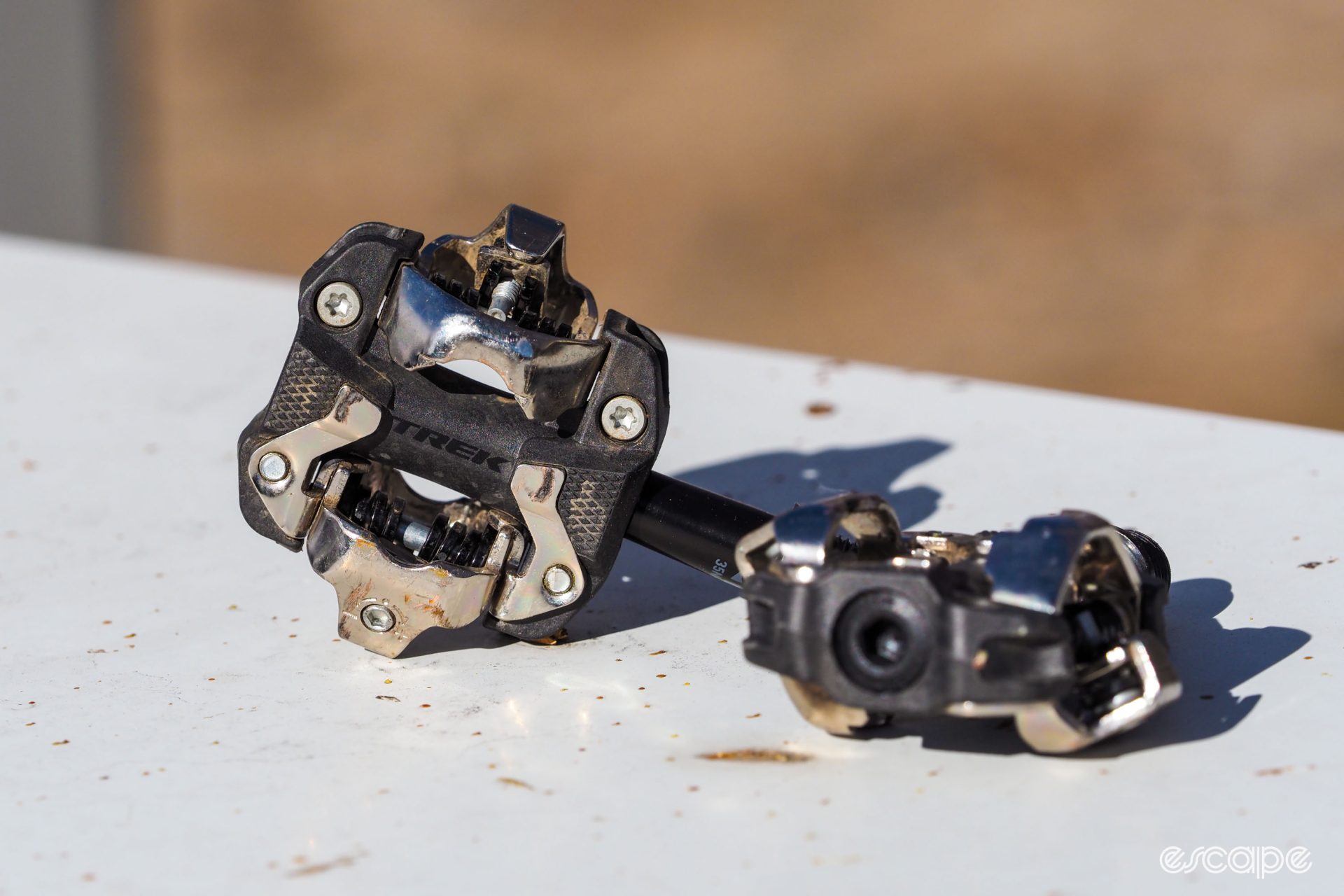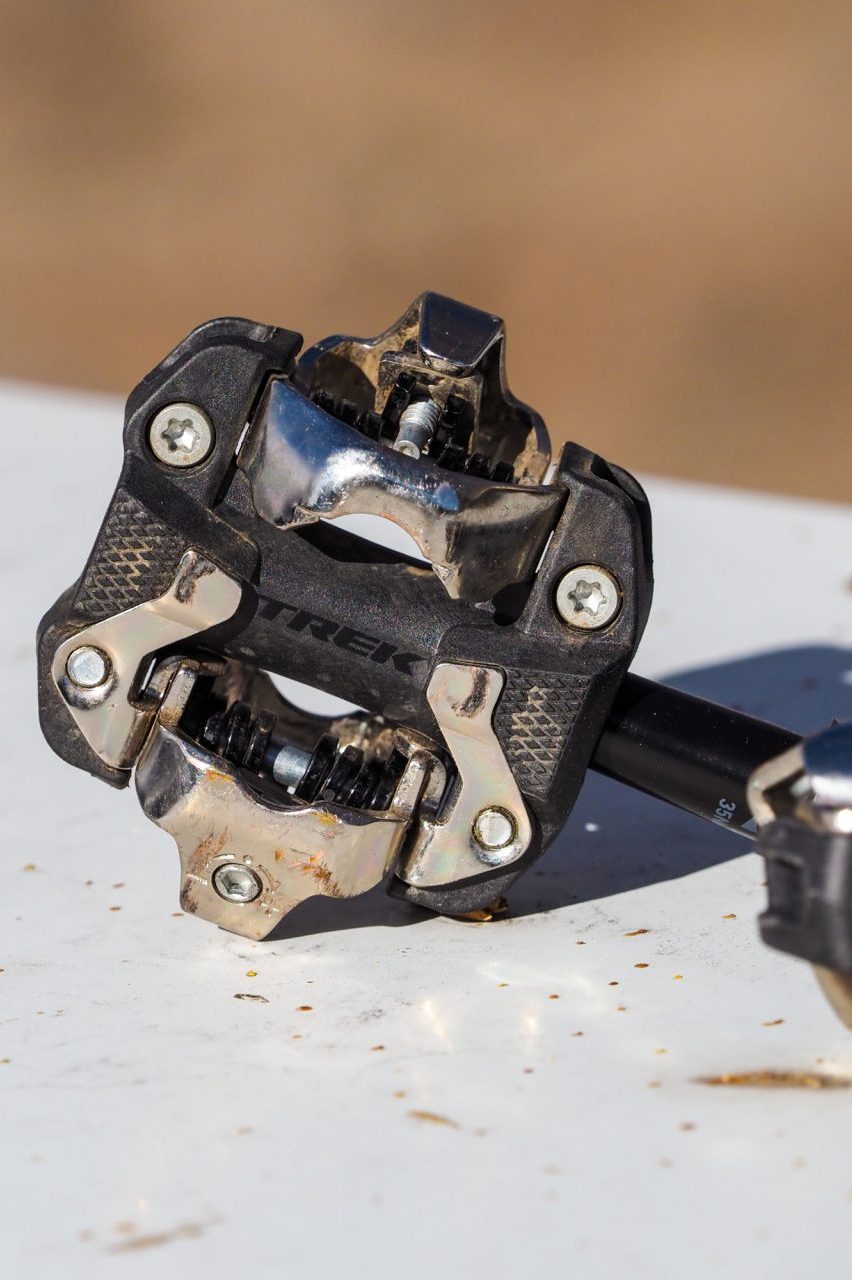Trek recently redesigned its range of two-bolt clipless pedals, not only substantially changing their appearances, but also the development partner – from Wellgo to Look. They’re a big step up from what was offered before, but aside from the convenience factor of finding them there on the shelf if you happen to be in a Trek factory store, I’d recommend going with the actual Look X-Track pedals they’re based on instead.
Looks like a duck and quacks like a duck
Shimano’s SPD two-bolt interface is almost certainly the most widely copied of any clipless pedal interface out there, and for good reason: it just plain works, and it’s telling that in the 34 years since SPD was introduced, only two other two-bolt systems – Crankbrothers and Time – have managed to carve out anything more than minuscule stakes in the market.
But what about the countless other two-bolt pedal brands that are out there? With few exceptions, they’re not only based on the SPD interface, but are specifically designed to be compatible with genuine Shimano SPD cleats. That was certainly the case for ages with Bontrager’s two-bolt clipless pedals, which were made by Taiwanese pedal manufacturing behemoth Wellgo. Trek’s latest Kovee and Line families of clipless pedals – the Bontrager name is being phased out across most product categories – upends that long-standing partnership, switching developing partners to the iconic French brand, Look.
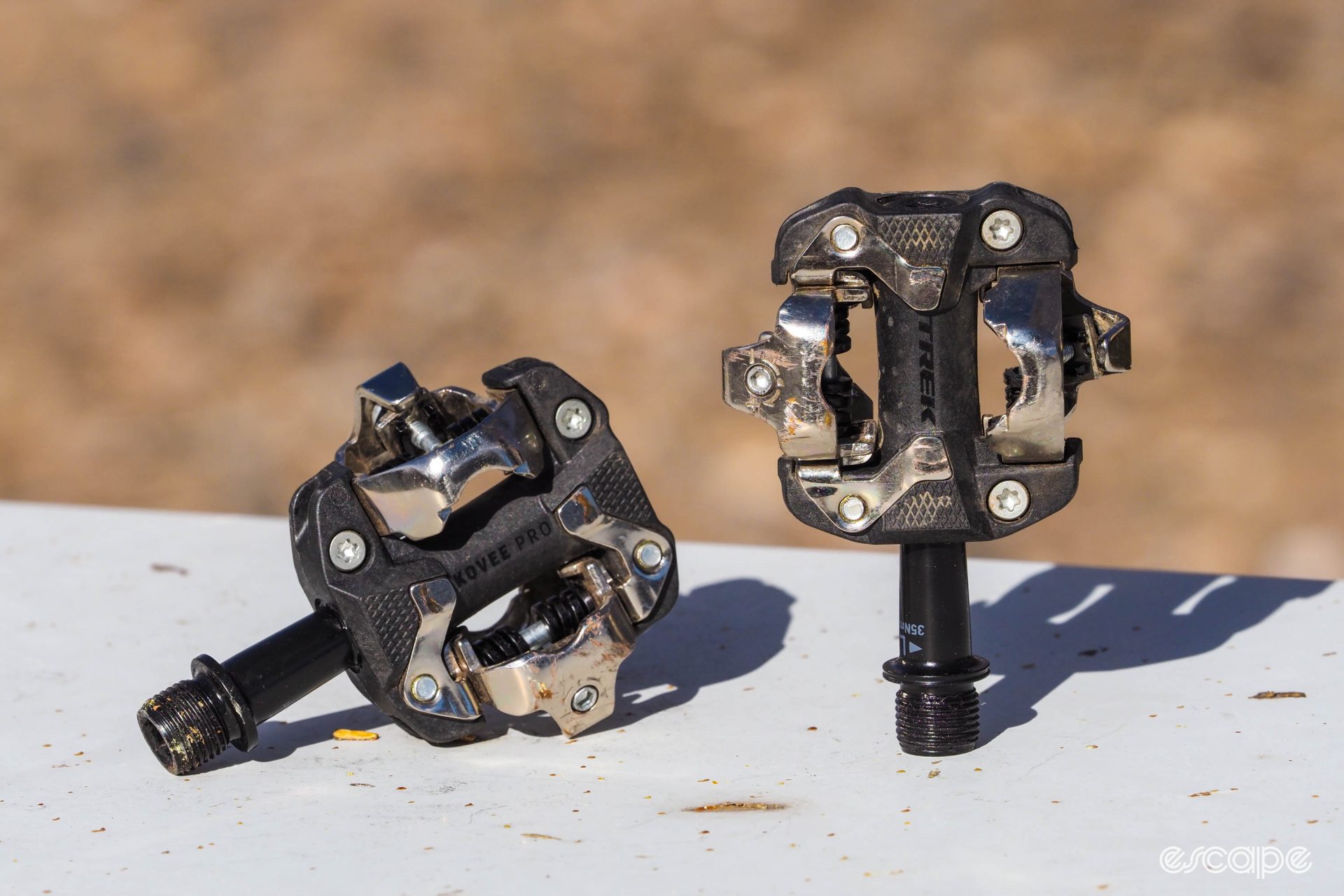
Trek’s new pedals don’t just borrow the interface design from Look, either. In fact, the steel stampings are so similar in appearance to what Look uses on the X-Track that they might even be directly provided by French brand. Trek says the bodies and spindles were developed in-house, although judging by markings on the SPD-compatible cleats, Taiwanese brand VP Components is likely at least doing final assembly for Trek, and probably manufacturing individual parts of the Kovee pedals, too.
Either way, there are some pretty major changes as a result, most notably widened platforms for better shoe support, as well as a far more modern appearance that no longer looks like it came out of the prior decade.
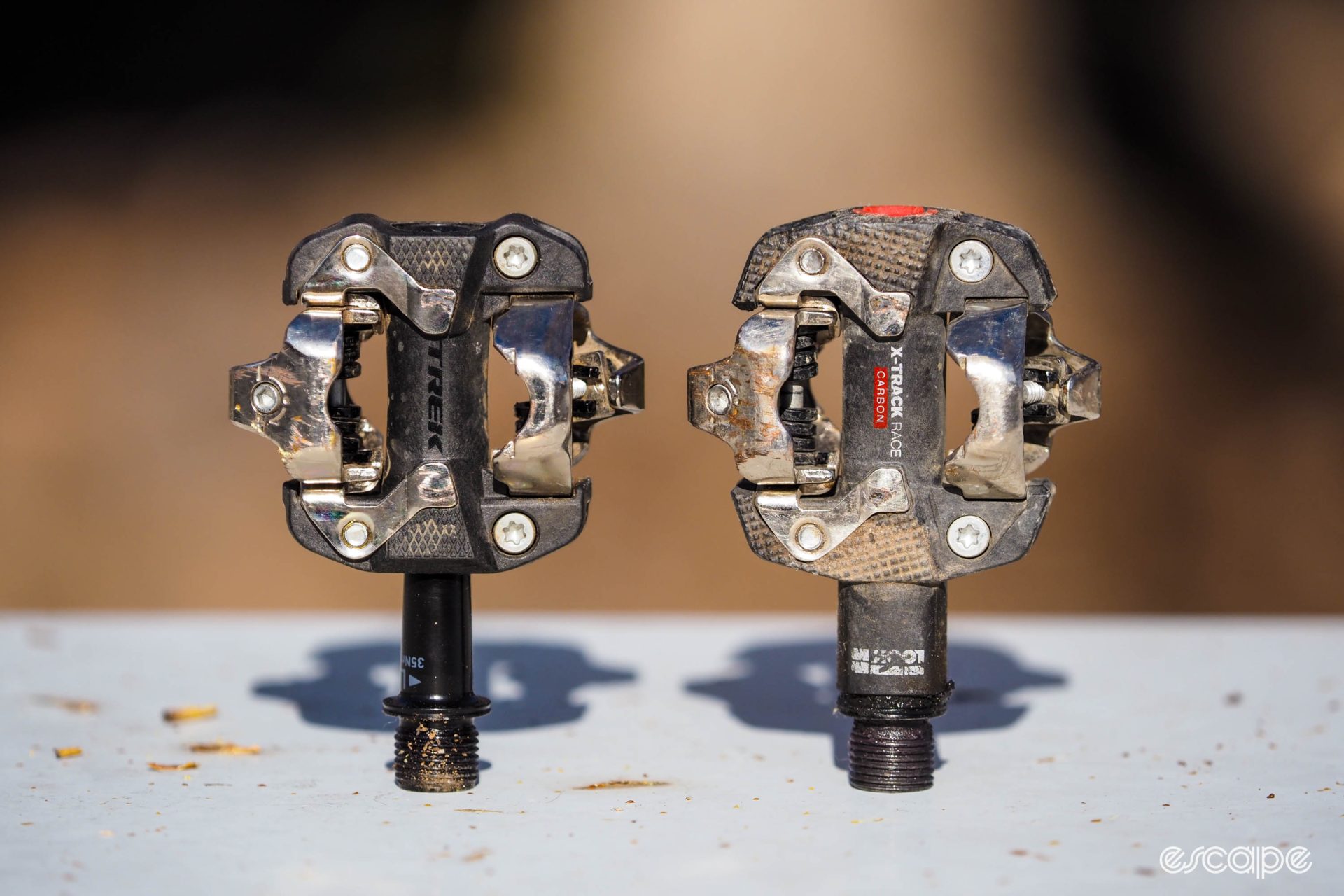
The flagship Kovee Pro pedals I’m reviewing here is aimed at XC and gravel riders with their smaller bodies and composite construction – a close analogue to Look’s own X-Track Carbon, in fact. The chromoly spindles rotate on bushings on the inboard side and cartridge bearings on the outboard end, and actual weight is 339 g per pair (plus 50 g for the included cleats).
Retail price is US$150 / AU$200 / £130 / €140.
A big step forward
I’ve long been a fan of the Look X-Track Race pedals, so much so that I often use them on my personal XC and gravel bikes. The engagement and release action are nearly as snappy and positive as genuine SPD pedals, but the textured composite pedal bodies offer a bit more grip for a less “walking on ice” feeling while pedaling. There’s also just a hint of additional rotational float so I can move around on the bike a bit more without worrying about an accidental release, and unlike the spring-loaded re-centering action on Time pedals, the unrestricted 6° of freedom on Look’s system is easier on my knees. The forward bit of the cleat also readily catches for quick engagement without glancing down – a critical feature when trying to re-start on a steep and/or technical climb.

Not surprisingly given the identical hardware, these Kovee Pros feel pretty much the same in that respect. The cleat engagement and release characteristics are identical, as is how the rotational float feels. Stack height and pedal stance width are the same, too, and while the Kovee Pro’s composite body is slightly different in shape, it seems to be similarly resistant to hard impacts with unyielding Colorado rocks.
For those of you looking to shave every possible gram, the Kovee Pros are even 11 g lighter per pair than the nearly identically priced Look X-Track Carbon.
So far, so good, right? Not so fast.
The Kovee Pro’s composite bodies may be similarly sized, but they’re nevertheless still smaller than the X-Track Carbons. More specifically, the Kovee Pros are 7 mm narrower – 61 mm vs. 54 mm – and there’s less surface contact area overall. That’s not a huge disparity, but given the variability in the cleat pocket dimensions across different brands of shoes, it can mean the difference between a solid platform to stand on while pedaling with one shoe, but almost no contact with another.
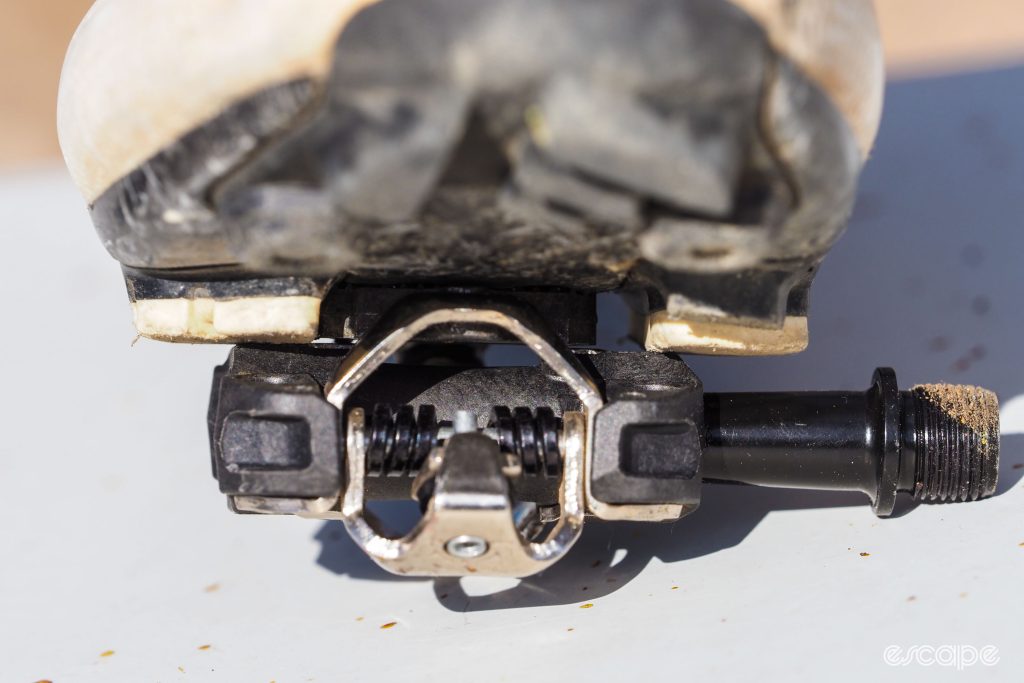
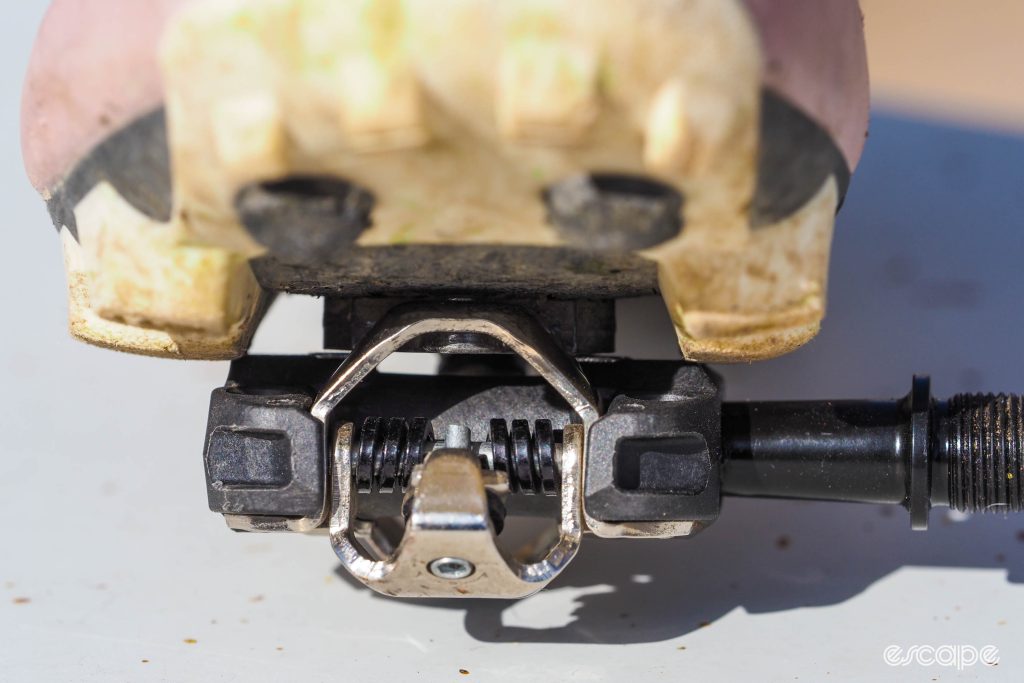
For example, pairing the Kovee Pro pedals with Specialized S-Works Recons results in a pleasantly stable foundation with lots of contact between the shoe lugs and pedal body. But the cleat pocket on Quoc Gran Tourer XC shoes is so wide that the pedal body almost wants to wedge itself between the tread. In either case, the X-Track Carbons work just fine.
Trek has made some unfortunate compromises in the axle assembly, too.
The X-Tracks also use a similar bushing-and-bearing layout, and the Treks have the advantage of using a standard 6 mm hex fitting for the end cap instead of the Look’s proprietary three-notch pattern for easier access to the axle guts. But whereas the outer edges of the bushing and bearing are 53 mm apart on the Looks, the Treks are only 41 mm apart. This provides less support for the spindle and is also likely to result in shorter lifespans for the bushings (which aren’t easily replaced). Moreover, while the Trek pedals seem incredibly well protected from the elements, the tight-fitting seals and thick factory grease make for heaps of drag that hasn’t gone away after almost four months of use.
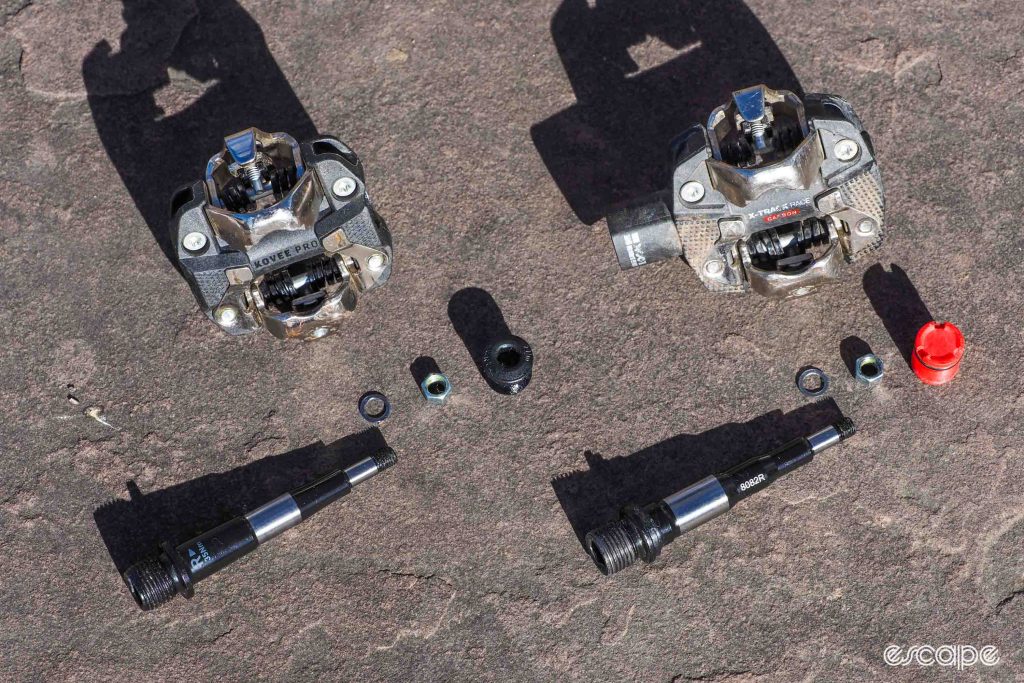

Comparison shopping
Ok, so if you’ve gathered by now that I’d recommend going with the Look X-Track Carbon over the similar Trek Kovee Pro, you’re right. It’d be one thing if the Treks were significantly less-expensive or lighter than the Looks, but seeing as how they’re nearly identical in both respects, I just don’t see why you’d go with the Treks unless you just happened to be wrapping up a new bike purchase in a Trek factory store and that’s all that was there – and indeed, as my fellow tech editor Dave Rome mentioned in a recent Geek Warning podcast episode, that may very well have been Trek’s primary strategy here.
Ok, but how do the Kovee Pros compare to Shimano’s offerings?
The workhorse Deore XT PD-M8100 pedals are barely heavier at 340 g per set, they’re less expensive at US$125 / AU$189 / £115 / €135. The 58 mm-wide platform is also nearly as generous as the Looks – albeit with less surface area in total – and although the Deore XT’s spindle bearings aren’t as far apart on its chromoly axle as the X-Tracks, Shimano uses more durable and smoother-spinning ball bearings throughout instead of an inboard bushing. Moreover, the Deore XT axle assembly doesn’t require any special tools for service (which, in all honesty, is largely superfluous since those pedals are so bulletproof, anyway).
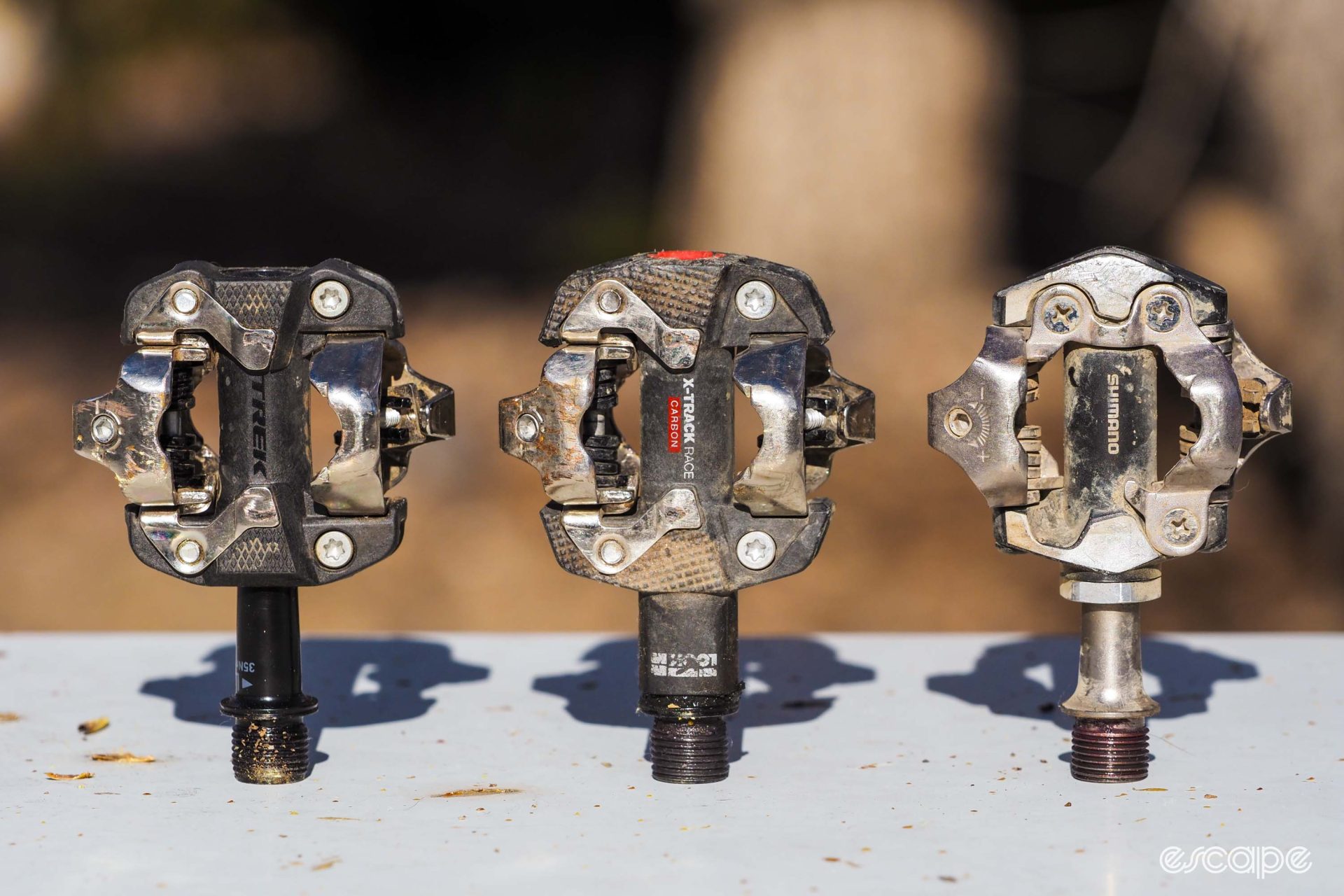
So, which way would I go?
For weight-weenies and millimeter-measurers, none of the above. The Shimano XTRs are the obvious answer there as they’re lighter than any of the options mentioned, not much more money, and have a lower stack height to boot – all without any appreciable compromises in performance or functionality.
Otherwise, the XTs are clearly the most logical choice, which is probably why Shimano sells so many of the things. But as I mentioned earlier, I still like the Look X-Tracks myself for the subtle difference in how they feel underfoot and the larger surface area, but it’s definitely a subtlety that many riders aren’t likely to notice.
Either way, these new Kovee Pro pedals are definitely a big improvement over what they replaced, and Trek chose a good partner for the overall design. But while they’re perfectly fine pedals for the most part, there are still better options out there.
More information can be found at www.trekbikes.com.

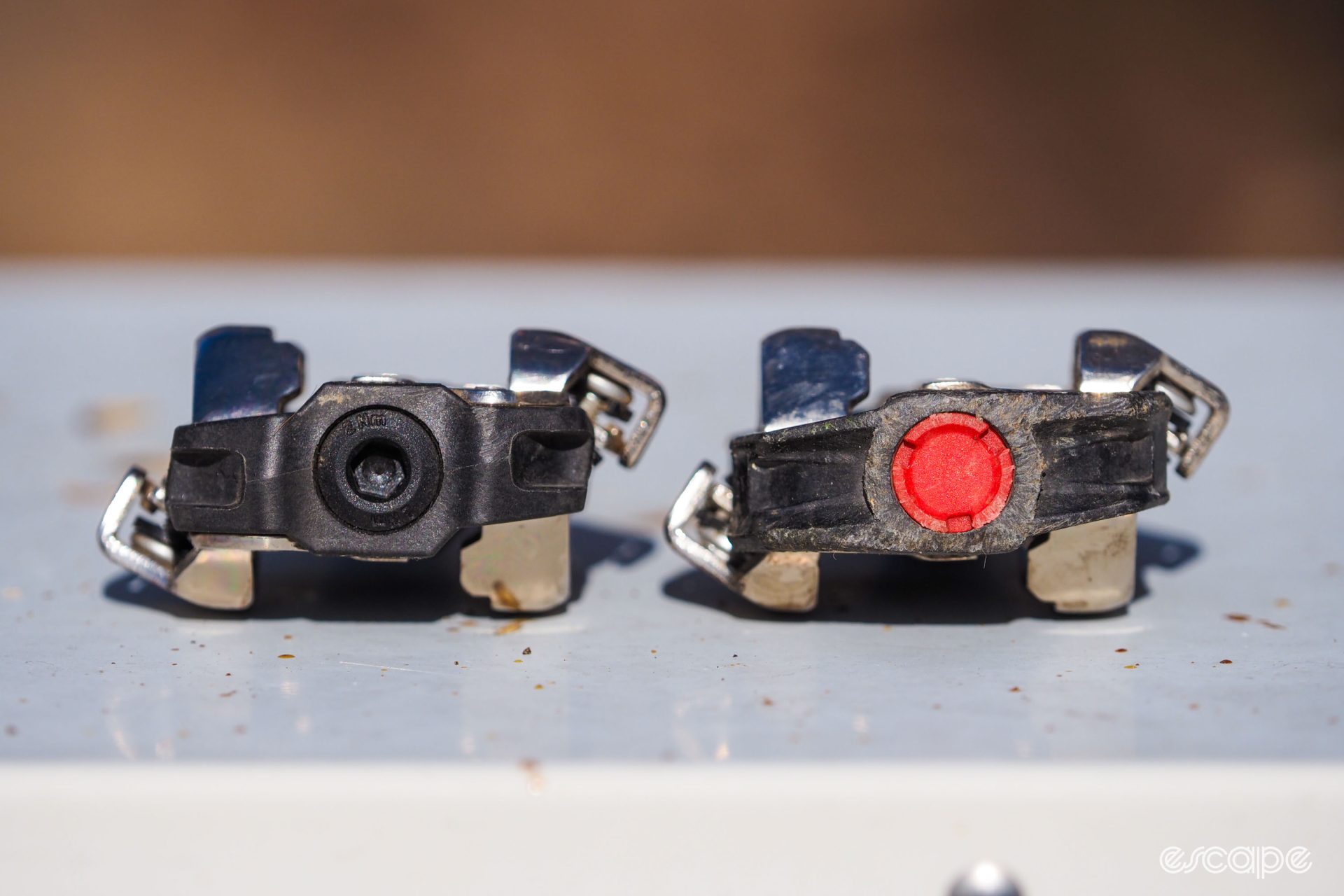
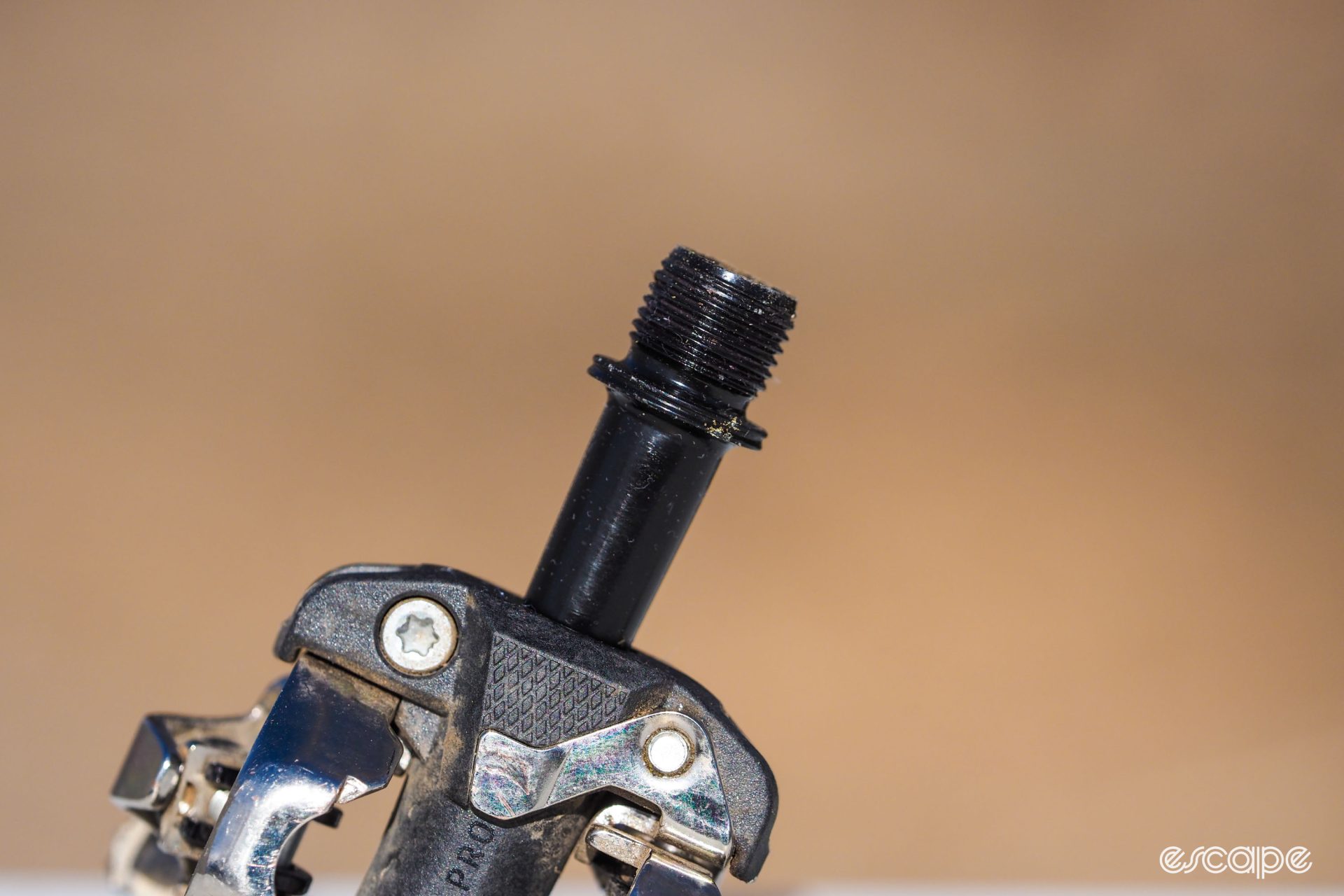

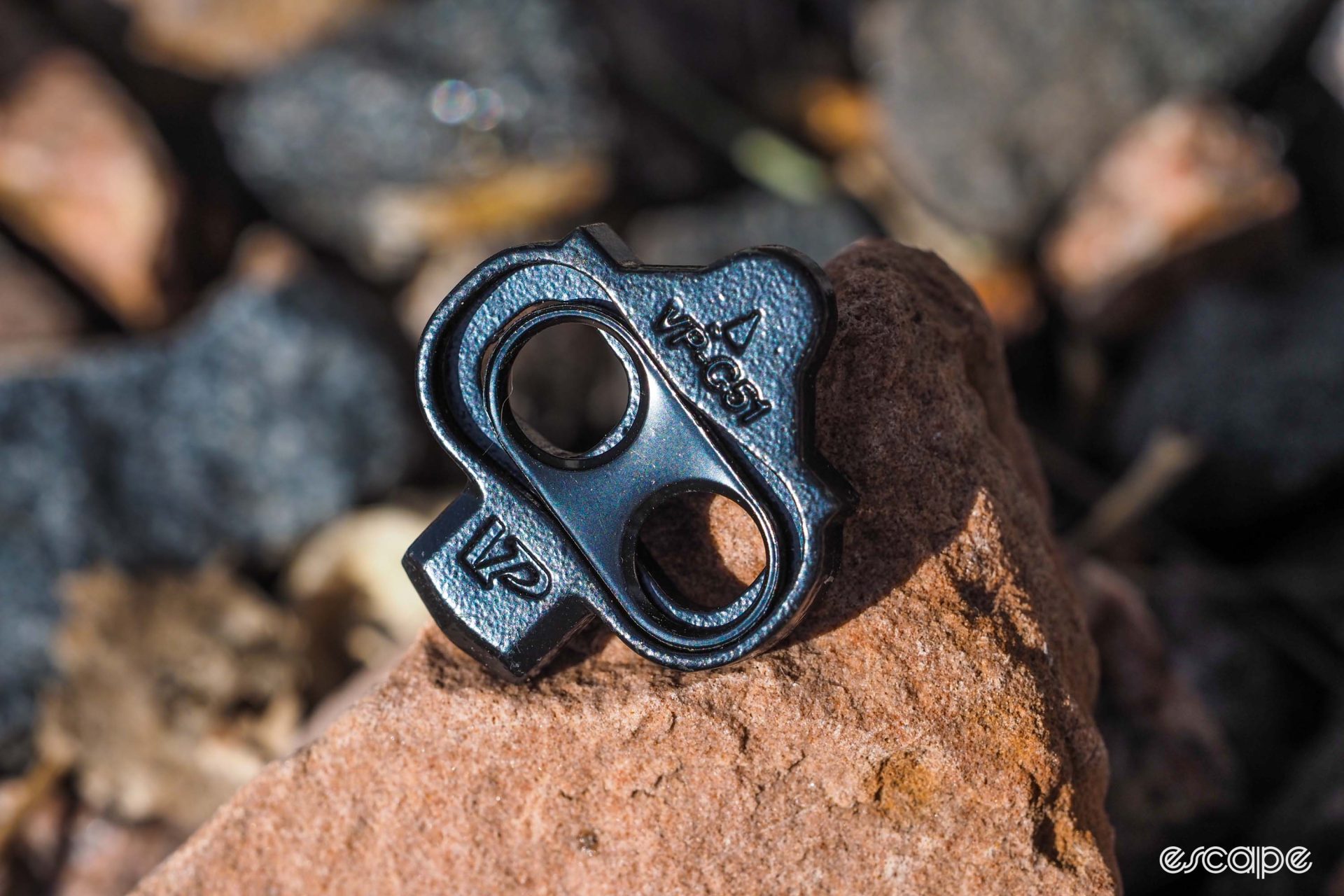

What did you think of this story?
